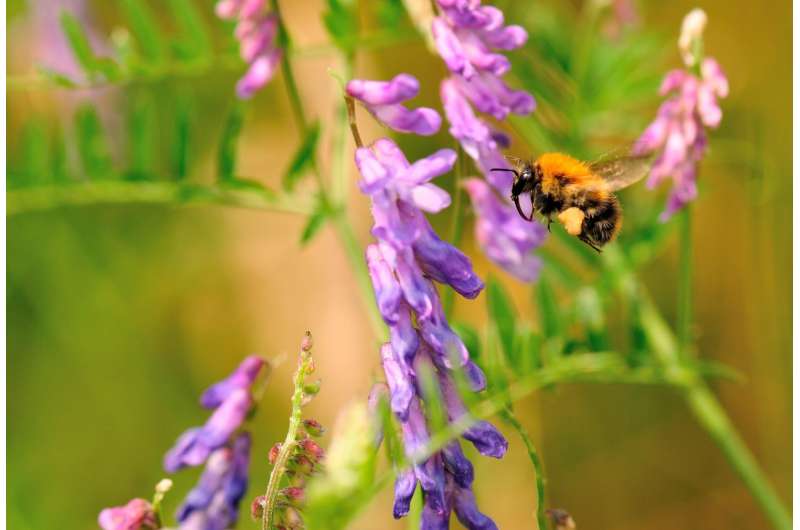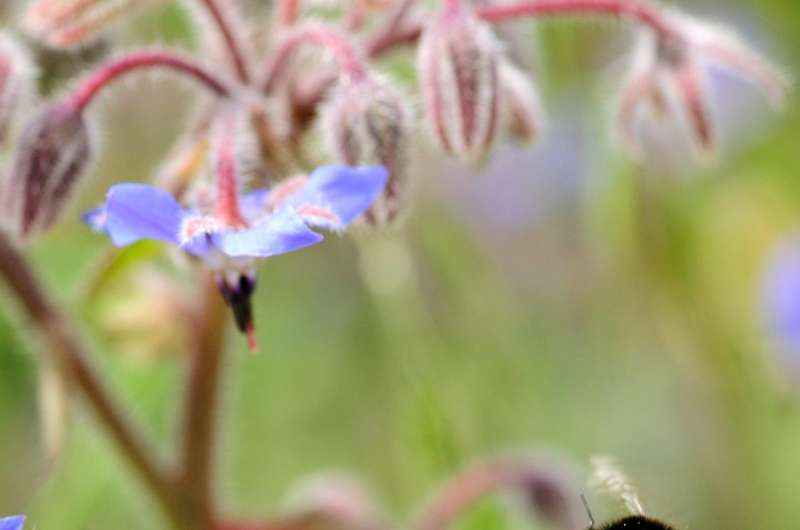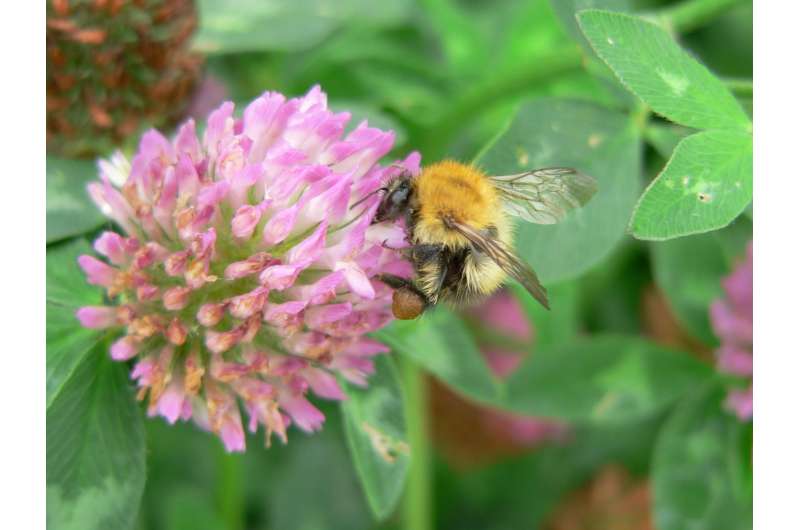Flower-rich habitats increase survival of bumblebee families

New research led by the UK's Centre for Ecology & Hydrology has revealed for the first time that flower-rich habitats are key to enhancing the survival of bumblebee families between years.
The results, which come from the largest ever study of its kind on wild bumblebee populations, will help farmers and policy makers manage the countryside more effectively to provide for these vital but declining pollinators.
The new study, published in the journal Nature, used DNA technology and remote sensing to identify, map and track mother, daughter and sister bumblebees over two years to reveal that access to a range of pollen and nectar-rich flowers is vital to the survival of their populations.
Lead author Dr Claire Carvell, a Senior Ecologist at the Centre for Ecology & Hydrology, said, "By decoding the clues hidden within the DNA of bumblebee queens and workers, and combining these with detailed landscape surveys, our research demonstrates that the survival of bumblebee families between years is positively linked with habitat quality at a landscape scale."
Researchers studied three species (Bombus terrestris, the buff-tailed bumblebee; Bombus lapidarius, the red-tailed bumblebee and Bombus pascuorum, the common carder bee), tracking more than 1,600 families across a farmed landscape.
They discovered that colonies produced more daughter queens that survived to the following year when colonies were located within 250-1,000 metres of habitats with high-quality food resources. These resources include spring and summer-flowering plants that provide pollen and nectar throughout the bees' lifecycle.
In the UK most bumblebee colonies live for less than a year; nests are formed in the spring by a single queen and produce up to a few hundred daughter workers. At the end of the summer new queens are produced which, after mating and hibernation, go on to start new colonies the following spring.

However, understanding survival between these critical lifecycle stages has proved challenging because in the wild, colonies are almost impossible to find.
The new research overcame these challenges by matching daughter queens to their mothers and sisters using advanced molecular genetics, and estimating the locations of colonies in the landscape from the locations of their workers.
The results provide strong support for environmentally-friendly management of farmland to provide more flowers in hedgerows, meadows and along the edges of arable fields. They will also help farmers and land managers decide where best to plant flowers in the landscape.
The study was led by scientists from the Centre for Ecology & Hydrology working with researchers from the University of East Anglia, ZSL (Zoological Society of London) and University College London.
"The findings suggest that increasing flowers provided by spring-flowering trees, hedgerow plants and crops across the landscape - in combination with summer flower resources along field edges - can increase the probability of family survival by up to four times," said Dr Carvell.
Senior author Dr Matthew Heard, a Principal Ecologist at the Centre for Ecology & Hydrology, said, "While there is an urgent need for more robust data on the patterns and causes of pollinator population decline, our study strongly suggests that conservation interventions can have a lasting, positive impact on wild pollinators in agricultural landscapes."
The study involved a combination of large-scale habitat manipulation, land-use and habitat surveys, molecular genetics and demographic and spatial modelling to examine between-year survival of family lineages in field populations of the three bumblebee species across farmland in Buckinghamshire, England.

The researchers collected DNA samples using a well-established technique that causes no harm to the bees. These samples were 'genotyped' in the laboratory to work out which bees originated from the same colony or family lineage.
Co-author Professor Andrew Bourke, from the University of East Anglia, said, "It has been very gratifying to contribute to this research, which has brought together a great range of scientific skills to help us understand one of the most pressing of today's conservation problems - how best to maintain our essential bee populations."
Co-author Dr Seirian Sumner, from University College London (formerly University of Bristol), who led the genetic component of the study, said, "This scale of experiment would be impossible without the use of genetic markers: as well as providing important insights, the study also showcases the power of molecular ecology in guiding our management of our natural resources."
Minister for Rural Affairs and Biosecurity Lord Gardiner said, "Bees are not only an iconic part of the countryside - they are vital to our environment and play a crucial role in food production.
"Thousands of volunteers and farmers across the country alongside businesses, councils and government departments are committed to protecting our pollinator population and this new research provides crucial new intelligence on how they can help."
The research was funded by the UK Insect Pollinators Initiative which ran from late 2010 and supported nine research projects (total value £10 million) investigating the causes and consequences of insect pollinator decline. It was a joint initiative funded by the Biotechnology and Biological Sciences Research Council, Defra, the Natural Environment Research Council, the Scottish Government and the Wellcome Trust. Acquisition of remote sensing data used in the study was funded by Syngenta Plc.
More information: Claire Carvell et al, Bumblebee family lineage survival is enhanced in high-quality landscapes, Nature (2017). DOI: 10.1038/nature21709
Journal information: Nature
Provided by Centre for Ecology & Hydrology



















